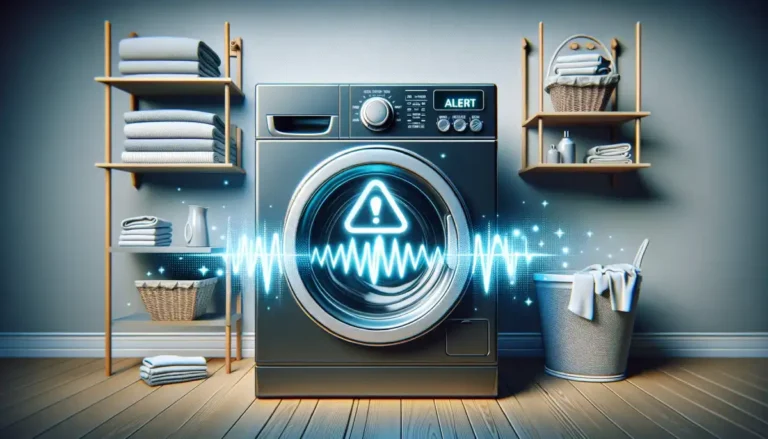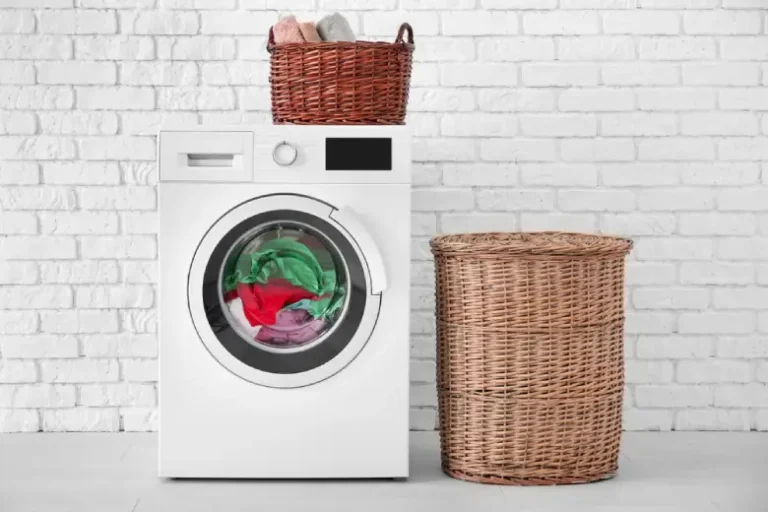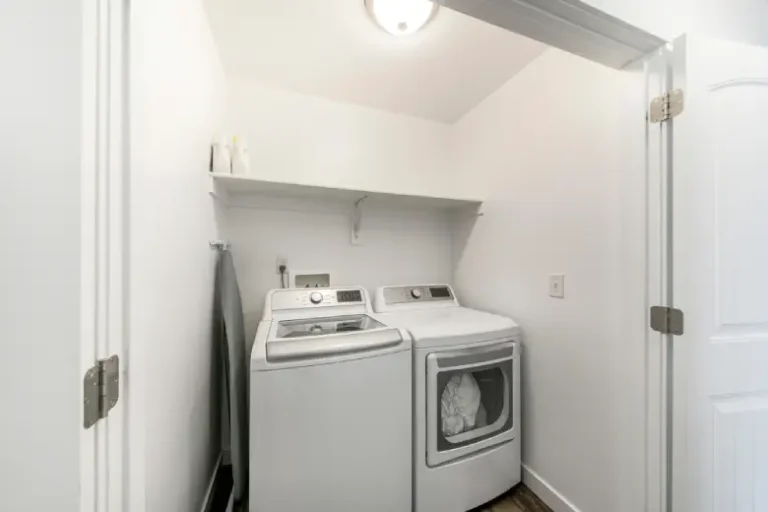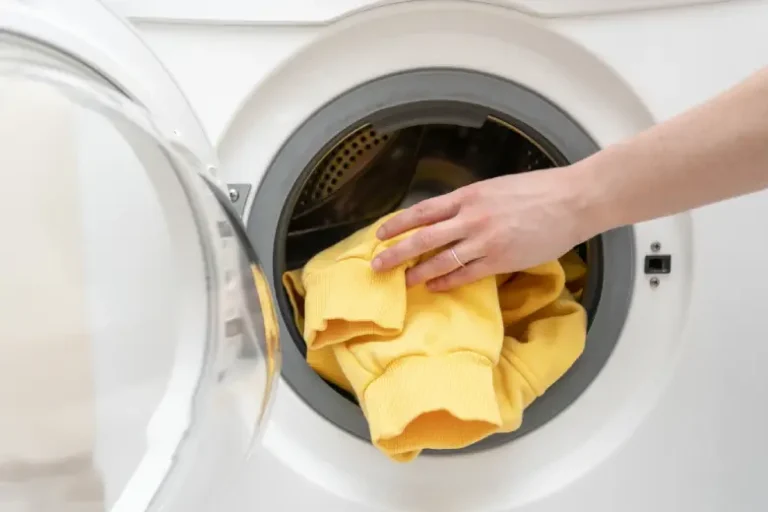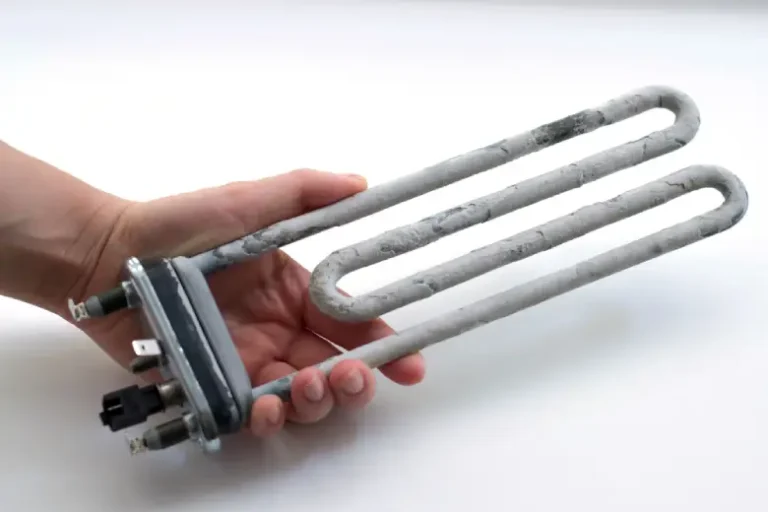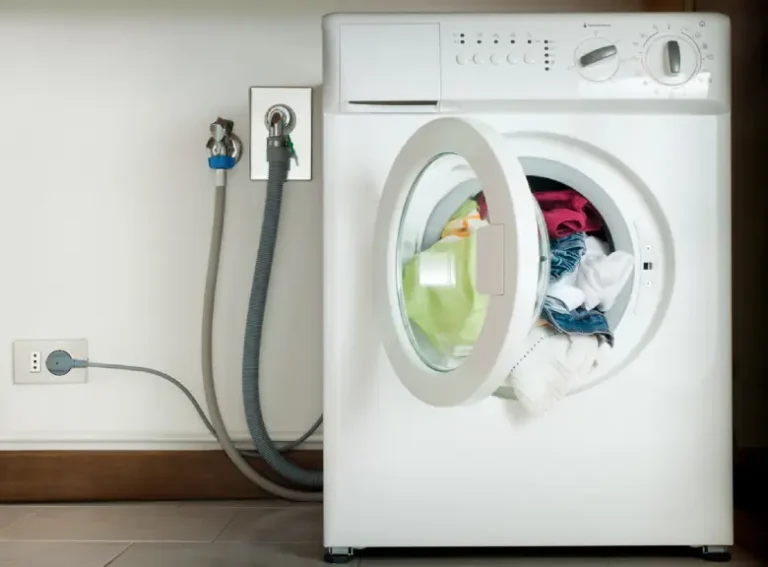How Do I Stop Washing Machine Moving [Quick Fix Methods]
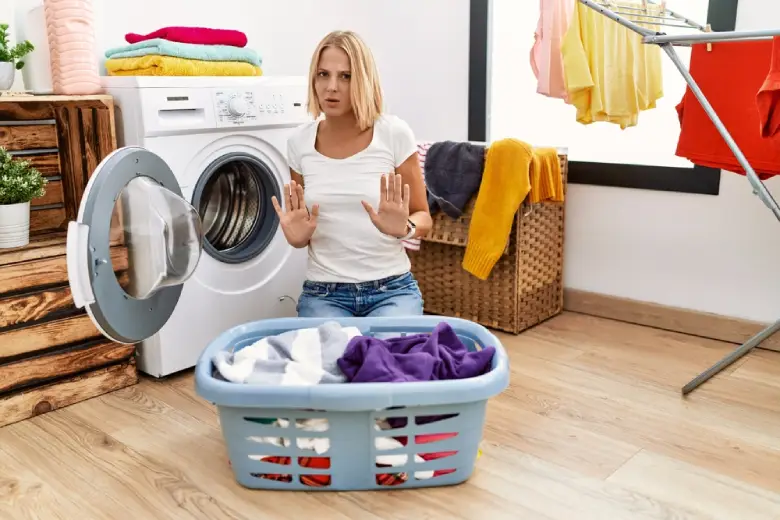
To stop a washing machine from moving, make sure it is properly leveled and balanced.
Common Issues With Washing Machine Movement
One common issue that many people face with their washing machines is movement during the wash cycle. This can be not only annoying but also potentially damaging to both the machine and the surrounding area. Understanding the common issues that cause washing machine movement is essential in preventing this problem. In this article, we will discuss three common issues with washing machine movement: unbalanced loads, an uneven surface, and worn or damaged leveling feet.
Unbalanced Loads
An unbalanced load is a frequent culprit when it comes to washing machine movement. When you overload the machine or place an uneven distribution of garments inside, it can cause the machine to shake and move excessively. This often happens when you wash large items like comforters or blankets, which can throw the machine off balance. To prevent this issue, always make sure to distribute your laundry evenly in the drum and avoid overloading the machine. If you have a single bulky item, tuck it in with smaller items to balance the load.
Uneven Surface
The surface on which your washing machine sits can also contribute to its movement. If the surface is not level, the machine may rock back and forth during the wash cycle. This can be due to an uneven floor or an incorrectly installed machine. To remedy this issue, ensure that your machine is placed on a flat and stable surface. You can use a level to check if the machine is sitting evenly. If it’s not, you may need to adjust the machine’s position or use a leveling tool to correct the surface.
Worn Or Damaged Leveling Feet
The leveling feet of your washing machine play a crucial role in keeping it stable and preventing movement. Over time, these feet can become worn or damaged, leading to instability and movement. Make sure to regularly inspect the leveling feet of your machine and ensure that they are in good condition. If you notice any signs of wear or damage, consider replacing them to maintain the stability of your washing machine. It’s also a good practice to periodically adjust the leveling feet to ensure they are properly supporting the machine.

Credit: www.instructables.com
Solutions For Stopping Washing Machine Movement
If your washing machine tends to move around during the spin cycle, it can not only be frustrating but also potentially damaging to both the machine and your floors. Luckily, there are several effective solutions available to prevent this movement and keep your machine stable. In this article, we will explore some reliable techniques that can help you stop your washing machine from moving.
Load Balancing Techniques
One of the primary reasons why a washing machine might move is an unbalanced load. When the clothes inside the drum are unevenly spread, it can cause the machine to vibrate excessively. To prevent this, always try to balance the load by evenly distributing the clothes inside the drum. If needed, you can pause the machine mid-cycle and manually rearrange the clothes to achieve a more balanced load.
Leveling The Machine
An improperly leveled washing machine can disrupt its stability during operation. To determine if your machine is level, place a spirit level on top of it. If the bubble in the level rests in the center, your machine is level. If not, adjust the leveling feet until the machine is stable. It’s crucial to ensure your machine is on a level surface too, as an uneven floor can also lead to movement.
Using Anti-vibration Pads
Anti-vibration pads can greatly reduce the movement and noise of your washing machine. These pads are specifically designed to absorb vibrations and provide a stable base for your machine. Simply place the pads under each corner of the machine and make sure they are properly aligned. The rubber material helps to minimize vibrations and keep your machine in place.
Securing The Machine With Straps
In some cases, securing your washing machine with straps can be an effective solution to prevent movement. These straps are specifically designed to hold the machine in place during operation. To secure the machine, attach the straps tightly around the machine and anchor them to the nearby wall or floor. This method ensures that your machine remains stable and significantly reduces any unwanted movement.
By following these simple yet effective techniques, you can keep your washing machine from moving and enjoy a more stable and quieter laundry experience. Whether it involves load balancing, leveling, using anti-vibration pads, or securing the machine with straps, choose the method that works best for you and enjoy the benefits of a stable washing machine that operates smoothly in your home.
Preventive Measures To Keep Washing Machine Stable
To prevent your washing machine from moving during use, follow these preventive measures: 1) Ensure the machine is placed on a level surface, 2) Adjust the machine’s feet to stabilize it, 3) Avoid overloading the machine with laundry, 4) Securely connect the machine to the water supply, and 5) Use a non-slip mat underneath the machine to prevent sliding.
These measures will help keep your washing machine stable and minimize any movement.
Proper Installation
Proper installation of your washing machine is crucial to prevent it from moving or shaking excessively. Here are a few steps you can take:
- Ensure that the machine is placed on a flat, level surface.
- Use a leveling tool to check if the machine is balanced. Adjust the machine’s feet or place a shim under them if necessary.
- Tighten the locking nuts on the machine’s feet to keep them secure.
Regular Maintenance
Maintaining your washing machine regularly helps to prevent movement and ensures its stability. Consider the following maintenance tips:
- Clean the inside of the machine and remove any built-up detergent or lint that could affect its balance.
- Inspect and clean the water inlet filters regularly to prevent clogs.
- Check the hoses for any signs of wear or damage and replace them if necessary.
- Keep the load balanced by distributing the clothes evenly in the drum.
Checking For External Factors
External factors can also contribute to your washing machine moving. Take the following factors into consideration:
- Ensure that the machine is not overloaded with clothes as this can disrupt its balance.
- Place a rubber mat or anti-vibration pads under the machine to reduce movement caused by vibrations.
- Confirm that the floor beneath the machine is strong and stable enough to support its weight.
Replacing Worn Parts
Over time, certain parts of your washing machine may wear out, leading to increased movement. Keep an eye out for the following signs and take appropriate action:
- If you notice excessive shaking or vibrating, check the machine’s suspension springs. If they are worn or damaged, replace them.
- Inspect the machine’s shock absorbers. If they are worn or leaking, replace them to improve stability.
- Look for any loose or damaged belts and replace them if necessary.
By following these preventive measures and implementing proper installation, regular maintenance, checking for external factors, and replacing worn parts, you can keep your washing machine stable and functioning effectively for years to come.

Credit: www.wikihow.com
Professional Help And Troubleshooting Tips
Is your washing machine vibrating and moving around? Don’t worry, we’ve got you covered with professional help and troubleshooting tips to help you stop the washing machine from moving. Whether you prefer to call a technician or try troubleshooting the issue yourself, we have all the information you need to keep your washing machine stable and working properly.
Calling A Technician
If you prefer to leave the fixing to the experts, calling a technician is the way to go. They have the knowledge and experience to identify and fix any underlying issues causing your washing machine to move. Here are the steps to take when calling a technician:
- Research reputable appliance repair companies in your area.
- Read customer reviews and check their licenses and certifications.
- Contact them to schedule an appointment.
- Explain the issue and provide any relevant details about your washing machine, such as the make and model.
- Follow any instructions the technician provides for preparation before their arrival.
Diagnostic Checklist
If you prefer to troubleshoot the issue yourself before calling a technician, you can use this diagnostic checklist to help you identify potential causes of the problem:
| Possible Causes | Solutions |
|---|---|
| The washing machine is not level | Use a level tool or adjust the feet of the machine to ensure it is level on the ground. |
| The load is unbalanced | Re-distribute the clothes evenly inside the drum to balance the load. |
| The shipping bolts are still attached | Check the back of the machine for shipping bolts and remove them if present. |
| The floor is not sturdy | Place the washing machine on a solid and level surface to prevent movement. |
Troubleshooting Tips
If you are confident in your DIY skills, you can try these troubleshooting tips to address the washing machine movement:
- Ensure the washing machine is properly leveled on the floor.
- Check if the load is evenly distributed inside the drum.
- Make sure there are no loose components or parts.
- Inspect the shock absorbers or suspension rods for any damage.
- Check the floor for stability and make adjustments if necessary.
By following these professional help and troubleshooting tips, you can put an end to your washing machine’s unwanted movement. Whether you decide to call a technician or troubleshoot the issue yourself, remember to prioritize safety and take necessary precautions to avoid any accidents. Keeping your washing machine stable will not only prevent damage to the appliance but also ensure that your laundry routine runs smoothly and efficiently.

Credit: www.instructables.com
Frequently Asked Questions For How Do I Stop Washing Machine Moving
How Can I Prevent My Washing Machine From Moving?
To prevent your washing machine from moving, make sure it is placed on a level surface. Use a rubber mat or anti-vibration pads underneath it to absorb vibrations. Adjust the machine’s feet until it is level and stable. Additionally, avoid overloading the machine and distribute the weight of the laundry evenly.
What Causes A Washing Machine To Move?
A washing machine may move if it is not properly balanced. Uneven distribution of laundry, overloading the machine, or placing it on an uneven surface can cause it to move. The machine’s feet may also need adjustment to ensure stability. Excessive vibrations during the spin cycle can also cause movement.
Why Is It Important To Stop A Moving Washing Machine?
It is important to stop a moving washing machine to prevent damage to the machine and avoid safety hazards. A moving machine can cause damage to the surrounding area and may result in leaks or electrical issues. It can also be dangerous as it can fall or tip over, causing injury or damage to the user.
Final Words
To prevent your washing machine from moving, implementing simple yet effective solutions can make a significant difference. Start by ensuring the machine is level and using anti-vibration pads to absorb excess movement. Tightening the legs and checking for worn parts can eliminate further issues.
Regular maintenance and proper loading techniques will help prolong the life of your machine and promote a smoother washing experience. Implementing these steps will provide stability and reduce the risk of damage or injury.
More to Explore
- E03 Candy Washing Machine Is Top Effective Features: A Closer Look
- 15 Unseen Reasons Washing Machine Not Draining UK and How to Fix It Like a Pro!
- Indesit Washing Machine Not Spinning: Troubleshooting Guide and Tips to Fix the Issue
- 9 Helpful Benefits of Hiring a Local Washing Machine Repairman
- Do Washing Machines Need Hot Water?

